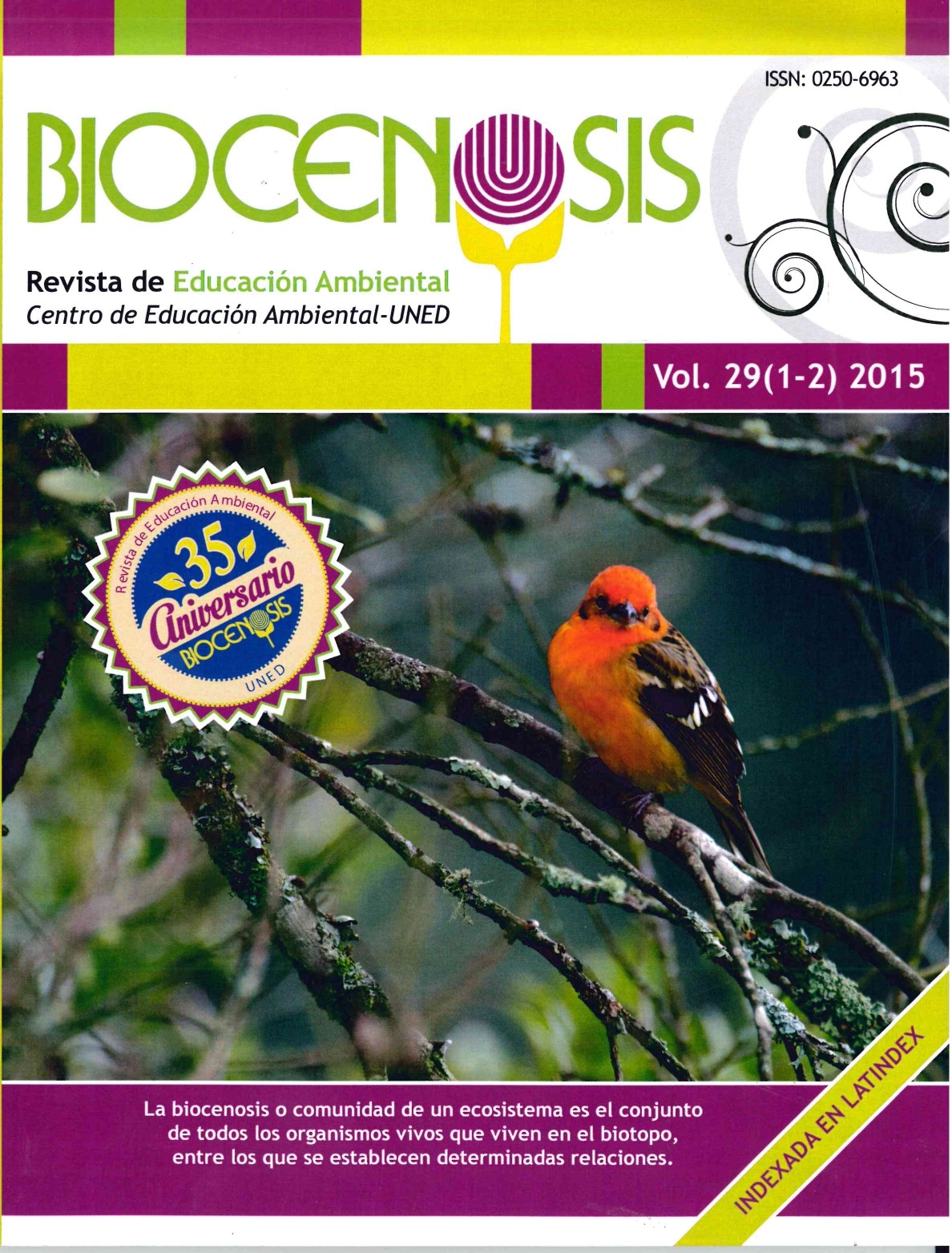ANALISIS DEL CONOCIMIENTO DE BIODIVERSIDAD EN ESTUDIANTES DE PRIMARIA Y SECUNDARIA EN DOCE COMUNIDADES RURALES DE COSTA RICA
Keywords:
Taxonomy, Knowledge, Education, Plants, InsectsAbstract
Knowledge on biodiversity of primary and high school students was analyzed in twelve rural communities of the country. A total of 524 students participated from third, fifth, seventh and ninth level. The transactional research was based on the species of animals and plants that were mentioned more often by students. Vertebrate and exotic plants were cited the most by the students. The taxonomic knowledge has a less specific level on animals than in plants, and the women knew more about exotic plants than men did. Considering that insects are the most abundant and diverse group in the country and Costa Rican plants constitutes the best-known group so far; this study concludes that teaching and learning on these levels can be improved as part of a National Strategy of Conservation, focusing it towards biodiversity uses and local knowledge of these groups. It is important to consider local student participation and differences in interest and needs according to gender.
References
Aguilar, L. (2005). ¿Por qué las mujeres están ausentes en el manejo y conservación de la biodiversidad? Archivo ECODES. Recuperado en <http://www.ecodes.org/archivo/proyectos/archivo-ecodes/pages/especial/mujeres_ma/lorena_aguilar.html>
Ceballos, G., García, A. & Ehrlich, P. R. (2010). The sixth extinction crisis: loss of animal populations and species. Journal of Cosmology 8: 1821-1831.
Convenio sobre Diversidad Biológica (CDB). (2012). Guías breves de las Metas de Aichi para la Diversidad Biológica. Recuperado de <http://www.cbd.int/nbsap/training/quick-guides/>
Evaluación de los Ecosistemas del Milenio. (2005). Ecosistemas y bienestar humano: oportunidades y desafíos para los negocios y la industria. Recuperado de www.unep.org/maweb/documents/document.754.aspx.pdf
García, R. (2002). Biología de la conservación. Santo Domingo de Heredia, Costa Rica, Instituto Nacional de Biodiversidad. 166 p.
Hindson J. (2010). Why Bother with Biodiversity? In Ulbrich K., Settele J., Benedict F.F. (Eds.) 2010. Biodiversity in Education for Sustainable Development – Reflection on School-Research Cooperation. Sofía:Pentsoft Publishers. p. 39-43.
Holl, K. D.; Daily, G. C. & Ehrlich, P. R. (1995). Knowledge and perceptions in Costa Rica regarding environment, population, and biodiversity issues. Conservation Biology 9 (6): 1548-1558.
Lude, A. (2010). The Spirit of Teaching ESD- Biodiversity in Educational Projects. In Ulbrich K., Settele J., Benedict F.F. (Eds.) 2010 Biodiversity in Education for Sustainable Development – Reflection on School-Research Cooperation. Sofía: Pentsoft Publishers p. 17 – 29.
Obando, V. (2002). Biodiversidad en Costa Rica: Estado del conocimiento y gestión. Santo Domingo de Heredia, Costa Rica, Instituto Nacional de Biodiversidad. 81 p.
Sampieri, R. H., Fernández, C. y P. Baptista. (2006). Metodología de la Investigación. 4ta ed. México D.F.: Mc-Graw-Hill Interamericana. 850 p.
Sistema Nacional de Áreas de Conservación (SINAC). (2009). IV Informe de País al Convenio sobre la Diversidad Biológica. Recuperado de: <http://www.inbio.ac.cr/estrategia/Informe4/IV%20INFORME%20DE%20PAIS%20COSTA%20RICA.pdf>
Smith, R. L. y Smith, T. M. (2001). Ecología. 4ta edición. Madrid: Pearson Educación. 664 p.
Unimer. (2002). Estudio Nacional sobre valores ambientales de las y los costarricenses. Recuperado de <http://www.unimercentroamerica.com/biblioteca_virtual/Estudio_de_Valores_Ambientales_en_Costa%20Rica.pdf>
